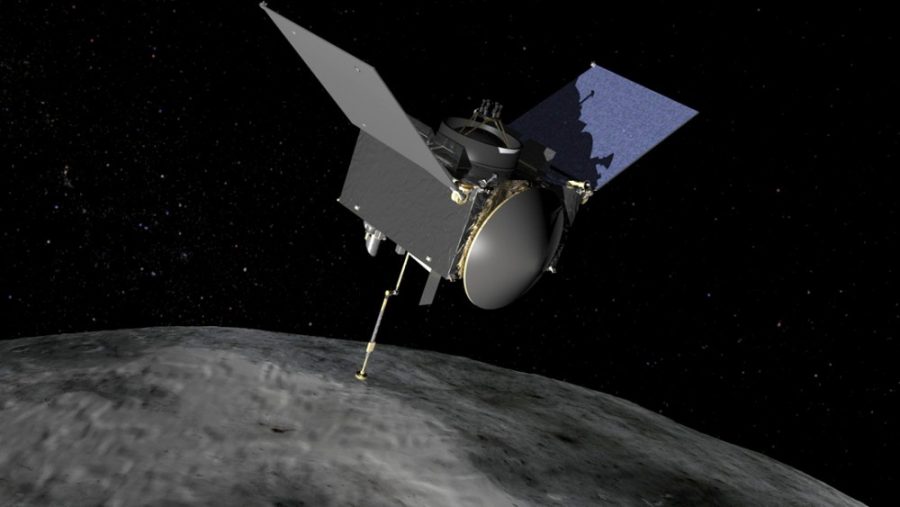The OSIRIS-REx spacecraft is launching in 2016, and tweets and names are launching along with it.
The OSIRIS-REx is a spacecraft that will study and map Bennu — a 1,760-foot-wide asteroid. It will study the asteroid for two-and-a-half years, collect and sample material and head back to Earth in 2021 with a sample and a time capsule of tweets, Instagram posts and names. When OSIRIS-REx lands in 2023, the team will not only be able to study the sample material from Bennu, but also tweets and Instagram posts from almost a decade prior.
The team working on OSIRIS-REx at the UA and NASA created the Asteroid Time Capsule campaign. The team is asking people to think about what space exploration is now and compare it to what they expect it will be in 2023, and then post on Twitter or Instagram with the hashtag “#AsteroidMission.” The campaign will pick the top tweets and Instagram posts, and they will accompany the OSIRIS-REx to Bennu in a microchip as a time capsule to be opened nine years after they are sent.
Edward Beshore, the mission’s deputy principal investigator, has ideas of what space exploration will be like in 2023. He said it is incremental.
“We would all like to be traveling around in starships by 2023, but that’s not likely,” Beshore said.
He said he thinks that systems with more sophisticated, sample-return missions like OSIRIS-REx will be more common, and we will be planning missions to comets and Jovian satellites. He also thinks we might be closer to finding other life.
His answer on Twitter: “I think that we’ll probably be investigating and bringing back samples from icy worlds.”
The Asteroid Time Capsule campaign has also created an opportunity for people to send their names into space called “Messages to Bennu!” Those on the campaign have collected almost 350,000 names with “Messages to Bennu!” and aim to collect 500,000 before the campaign ends in September.
Dante Lauretta, the mission’s principal investigator and professor in the UA’s Lunar and Planetary Laboratory and department of planetary sciences, said he is confident about the OSIRIS-REx mission.
“I think that OSIRIS-REx will have successfully completed this mission,” Lauretta said.
Lauretta added that he thinks the OSIRIS-REx will increase asteroid exploration in general and encourage other countries to visit asteroids. Lauretta said they decided to use Twitter and Instagram to try and make OSIRIS-REx’s mission the public’s mission.
Both Beshore and Lauretta are UA alumni and said they hope UA students, faculty and fans are proud of this mission. It is the first of its kind, and it is based at the UA. Submissions for both campaigns close on Sept. 30.
Those tweeting to OSIRIS-REx range from politicians to students. Tucson’s Congressman Ron Barber tweeted that the UA leading NASA’s OSIRIS-REx’s mission is “one example of how we close the #InnovationDeficit & stay ahead of other countries.”
—Follow Christianna Silva @christianna_j









